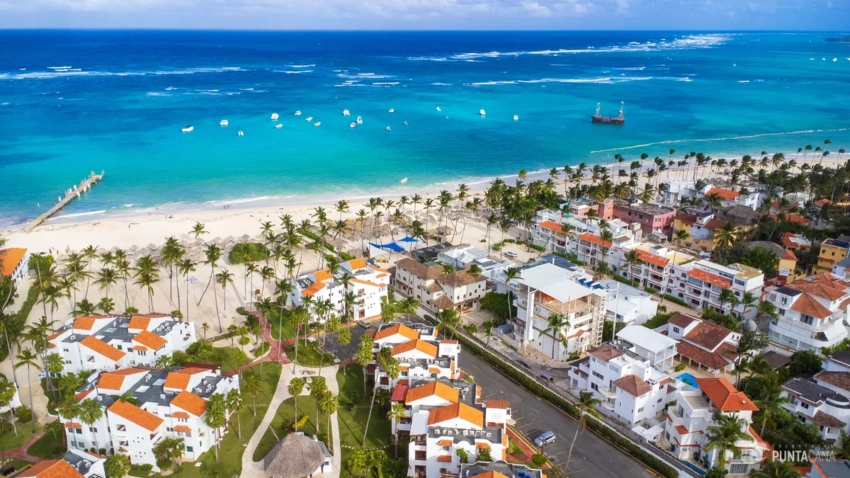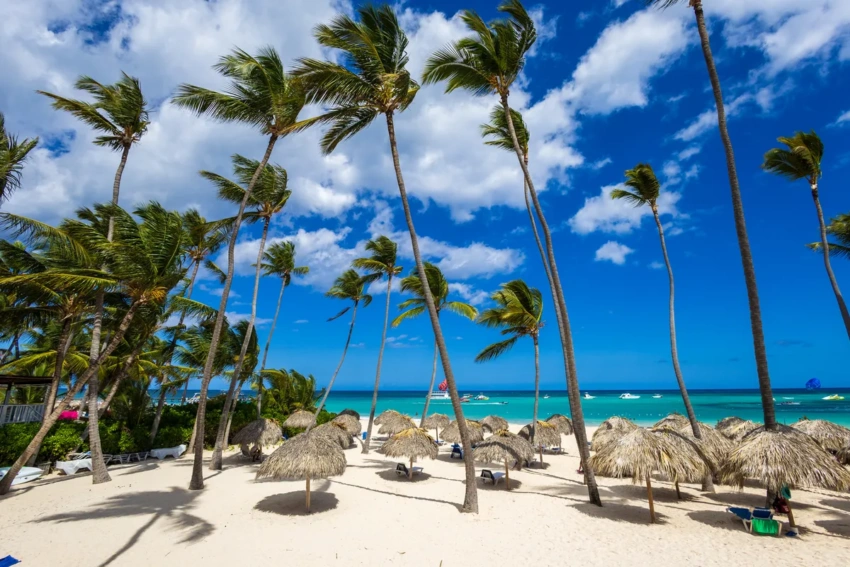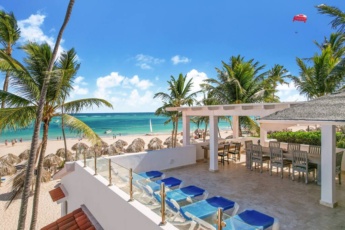Currency Questions: Paying in USD vs. Dominican Pesos During Your Stay
Understanding Currency Basics

Currency Questions: Paying in USD vs. Dominican Pesos During Your Stay
Navigating the currency landscape of the Dominican Republic is a crucial aspect of planning your trip. Understanding the nuances between using the local currency, the Dominican Peso (DOP), and the widely accepted US Dollar (USD) can significantly impact your spending and overall experience.
1. Dominican Peso: The Local Currency
The Dominican Peso (DOP) is the official currency of the Dominican Republic. Historically, the Peso has undergone various transformations since its inception in 1844. It is issued by the Central Bank of the Dominican Republic and comes in denominations of coins (1, 5, 10, and 25 pesos) and banknotes (50, 100, 200, 500, 1000, and 2000 pesos). Understanding these denominations can help you manage your transactions more efficiently while ensuring you receive the correct change.
The exchange rate between the USD and DOP can fluctuate, typically ranging between 50 to 60 pesos per dollar. These fluctuations are influenced by economic variables such as inflation rates, foreign investment, and political stability. Staying updated on current rates through reliable financial news sources or currency converter apps is advisable before and during your trip.
2. USD Acceptance in the Dominican Republic
The USD is widely accepted in tourist areas across the Dominican Republic. Many hotels, restaurants, and shops particularly in popular destinations like Punta Cana and Santo Domingo, often list prices in both DOP and USD. This dual pricing mechanism makes it convenient for travelers who prefer to use USD without the hassle of exchanging currency frequently.
However, it’s important to note that while USD is accepted, transactions conducted in USD may sometimes incur less favorable exchange rates compared to paying in pesos. It’s always a good idea to ask merchants about their exchange rate if you’re planning to pay in USD. Moreover, smaller establishments and local vendors might not accept USD, making it crucial to have some pesos on hand for such situations.
3. Exchange Rate Fluctuations
Exchange rate fluctuations can have a notable impact on your travel budget. Understanding these changes and preparing accordingly can enhance your financial planning and prevent unexpected expenses.
Exchange rates can vary daily due to various economic factors, and even slight changes can affect the overall cost of your trip. For instance, a minor dip in the Peso’s value against the USD can make your spending power increase, allowing you to get more for your money when converting USD to DOP.
To mitigate the effects of these fluctuations, consider exchanging a portion of your money when the rates are favorable or using travel cards that offer competitive exchange rates. Additionally, keeping track of currency trends and consulting financial advisors can offer insights into the best times to convert your money.
By understanding these currency basics, you can make informed decisions that optimize your expenses and enhance your travel experience in the Dominican Republic.
Currency Exchange Options
Navigating currency exchange in a foreign country can be daunting, but understanding your options is key to ensuring you get the best value for your money. In the Dominican Republic, you have several methods to choose from, each with its own advantages and considerations.
1. Banks and ATMs
Banks and ATMs are often the most reliable means of obtaining local currency. With a wide network across the Dominican Republic, they offer security and generally competitive exchange rates. However, there are a few factors to keep in mind.
ATMs are conveniently located in cities and tourist areas, allowing you to withdraw Dominican Pesos directly from your account. Most accept international cards, but be aware of potential foreign transaction fees imposed by your bank. Additionally, not all ATMs are created equal—it’s advisable to use those affiliated with reputable banks like Banco Popular or Scotiabank to minimize the risk of card skimming.
When using a bank, you can exchange foreign currency at a teller window. While this method can be time-consuming due to queues and paperwork, it offers the assurance of a safe transaction. Ensure you bring your passport as identification, as it’s often required for currency exchange.
2. Currency Exchange Offices
Currency exchange offices, also known as casas de cambio, are abundant in tourist-heavy locations. They offer a convenient alternative to banks, often providing competitive rates and faster service.
While the rates at these offices can be attractive, it’s essential to shop around. Rates can vary significantly from one office to another, and some may charge commission fees. Look for offices that are well-reviewed and situated in reputable areas. A good practice is to ask upfront about any additional charges to avoid surprises.

Punta Cana
3. Hotel and Airport Exchanges
Exchanging currency at hotels and airports offers unmatched convenience, particularly upon arrival or departure. However, this convenience often comes at a cost. Rates at airport exchanges are typically less favorable due to higher operational costs and the captive audience.
Hotels, on the other hand, may offer more competitive rates, but it’s crucial to verify this before proceeding. Some hotels cater to tourists with special offers on exchange rates, while others might include hidden fees. Always inquire about the full cost of the transaction and compare it with other options before making a decision.
Comparison of Currency Exchange Options
| Method | Pros | Cons |
|---|---|---|
| ATMs | Convenient, safe, competitive rates | Foreign transaction fees, risk of skimming |
| Banks | Secure, reliable | Time-consuming, requires ID |
| Exchange Offices | Fast, competitive rates | Varied rates, possible commission fees |
| Hotels | Convenient, often no commission | Potentially higher rates |
| Airports | Highly convenient | Least favorable rates |
In conclusion, while each currency exchange option has its pros and cons, being informed and prepared will help you make the best choice for your needs. Whether you opt for security and reliability with banks, or the convenience of hotel exchanges, always stay aware of rates and fees to maximize your spending power in the Dominican Republic.
Comparing Costs: USD vs. Dominican Pesos
When traveling to the Dominican Republic, understanding the cost implications of using either USD or Dominican Pesos can significantly affect your budget. Here, we delve into how different currencies impact your expenses across various aspects of your trip, making your stay both enjoyable and economically efficient.

Punta Cana
1. Tourist Attractions and Activities
Paying for tourist attractions and activities in the Dominican Republic can vary significantly depending on your choice of currency. While USD is widely accepted at most tourist destinations, paying in Dominican Pesos often results in better deals. This is because some vendors apply a less favorable exchange rate when pricing in USD, leading to higher costs for tourists.
- Exchange Rate Benefits: By using Dominican Pesos, you benefit from the market exchange rate, often avoiding extra charges applied to USD transactions.
- Preferred Pricing: Many local vendors offer preferential pricing when you pay in the local currency, as it is more convenient for them to handle.
- Local Experience: Engaging in transactions in pesos also provides a more authentic experience, allowing you to interact with locals in their native currency.
2. Dining and Shopping
Dining and shopping present unique scenarios where currency choice can notably impact your expenses. While some high-end restaurants and shops may list prices in USD, opting to pay in Dominican Pesos can yield savings.
- Menu Pricing: Restaurants that cater to tourists may mark up prices for USD transactions. Paying in pesos can help avoid these markups.
- Local Markets: Shopping at local markets or smaller shops often requires pesos, as these vendors might not accept USD or might offer a poor exchange rate.
- Negotiation Leverage: When shopping in local markets, using pesos gives you better leverage to negotiate prices, which is a common practice in these settings.
3. Transportation Costs
Transportation expenses, whether for taxis, buses, or other local transit options, can also fluctuate based on your currency choice. Understanding how each currency affects these costs can lead to substantial savings.
- Taxi Fares: Many taxi drivers quote fares in USD, which can be higher than paying in pesos. Always ask for the fare in pesos for a potentially better rate.
- Public Transit: Buses and other forms of public transportation typically require payment in Dominican Pesos, making it essential to carry small denominations.
- Rental Services: Car rental services may accept USD, but paying in pesos might provide a more favorable overall rate, especially if exchange rates are advantageous.
Our Best Ocean View Villa Rentals in Punta Cana
For those looking to make the most out of their travel budget, consider booking one of our luxurious ocean view villas in Punta Cana. Offering competitive prices and exceptional comfort, these villas are the perfect place to unwind after exploring all that the Dominican Republic has to offer. Don’t miss the opportunity to enhance your experience with an unforgettable stay.

New Bávaro Beach Beachfront Condo for Rent - Stunning Ocean View, Housekeeper & Rooftop Terrace
from $811 night Read more
Private Cap Cana Caleton Villa with Large Pool, Ocean View, and Top Amenities
from $3120 night Read morePractical Tips for Currency Management
Efficient currency management can significantly enhance your travel experience by ensuring you have sufficient funds while minimizing unnecessary fees and risks. Below, explore practical tips to make the most of your finances during your stay in the Dominican Republic.
1. Safety Tips for Carrying Cash
Carrying cash in a foreign country can be daunting, but with a few precautions, it can be done safely. Distribute your cash across multiple locations, such as in different pockets or bags, to minimize loss if any one place is compromised. Consider using a money belt or a concealed wallet to keep your cash close to your body and out of sight.
When visiting crowded tourist areas, remain vigilant and aware of your surroundings to avoid pickpockets. If you need to withdraw large sums of money, do so during daylight hours and preferably inside a bank rather than an outdoor ATM. Additionally, avoid displaying large amounts of cash in public settings.
2. Using Credit and Debit Cards
Using credit and debit cards in the Dominican Republic can be advantageous, offering security and convenience. However, be aware of potential foreign transaction fees. Before your trip, check with your bank or card issuer about any fees that may apply, and consider using a card that offers no foreign transaction fees.
Ensure your card is chip-enabled, as this is the standard in most international locations and offers enhanced security compared to magnetic stripe cards. Notify your bank of your travel dates to prevent your card from being blocked due to suspicious activity.
Opt for paying in local currency at the point of sale when given the choice, as Dynamic Currency Conversion (DCC) can lead to unfavorable exchange rates. Keep track of your spending through mobile banking apps to monitor your balance and identify any unauthorized transactions promptly.
3. Planning a Currency Budget
Creating a detailed currency budget for your trip can alleviate stress and ensure you have enough funds to cover your expenses. Start by estimating the costs of accommodation, meals, transportation, and activities. Research typical prices in the Dominican Republic to create a realistic budget.
Once you have a budget, decide how much cash you’ll need versus how much you plan to pay with cards. Remember that certain establishments, especially in more rural or remote areas, might only accept cash.
Consider setting up a daily spending limit to prevent overspending and ensure your funds last throughout your trip. Keep an emergency fund separate to cover unexpected expenses such as medical emergencies or last-minute travel changes.
By following these practical currency management tips, you can enjoy a smooth and worry-free experience in the Dominican Republic, making the most of your travel budget and ensuring your safety and security.
Avoiding Common Currency Pitfalls
Navigating the world of currency while traveling can be daunting, especially when faced with potential pitfalls. Understanding these challenges is crucial for a stress-free vacation in the Dominican Republic.
1. Recognizing and Avoiding Scams
In the vibrant markets and bustling streets of the Dominican Republic, travelers may encounter various scams, especially related to currency exchange. Being vigilant is key to safeguarding your finances. One common scam involves counterfeit currency. Tourists are sometimes given fake Dominican Pesos or even outdated bills that are no longer in circulation. To avoid this, always exchange money at reputable establishments, such as banks or authorized exchange offices. Additionally, familiarize yourself with the look and feel of authentic Dominican Pesos, including security features like watermarks and holograms.
Another prevalent scam is the “bait and switch” tactic, where a vendor quotes a price in USD but insists on payment in Pesos at an unfavorable exchange rate. To counter this, always confirm the currency of the price before agreeing to a purchase and calculate the conversion using a reliable app or currency converter to ensure you’re getting a fair deal.
2. Understanding Hidden Fees
Hidden fees can significantly impact your travel budget if you’re not careful. When withdrawing money from ATMs, be aware of potential foreign transaction fees and ATM service charges. These fees can vary depending on your bank and the ATM network, so it’s wise to consult your bank about their specific charges before your trip.
Credit and debit card transactions might also incur hidden fees, such as dynamic currency conversion fees. This occurs when a merchant offers to convert the transaction into your home currency, often at a poor exchange rate. To avoid this, always opt to pay in the local currency. It’s also beneficial to carry a credit card that offers no foreign transaction fees, which can save you a considerable amount over the course of your trip.
3. Handling Currency Shortages
Running low on local currency can be inconvenient and stressful. One solution is to keep a small reserve of USD, as it is widely accepted in tourist areas and can be a lifesaver in a pinch. However, it’s important to note that change will often be given in Pesos, so ensure you understand the conversion to avoid any misunderstandings.
Another strategy is to use mobile payment apps where available. Although not as widespread as in other regions, some businesses in Punta Cana and other tourist hotspots are beginning to accept payments through apps like PayPal or local mobile wallets. This can provide a convenient backup if you’re unable to access cash.
Comparison of Currency Exchange Options
| Exchange Method | Pros | Cons | Potential Fees |
|---|---|---|---|
| Banks | Secure, reliable rates | Limited hours, possible queues | Minimal |
| ATMs | 24/7 access, convenient | ATM fees, foreign transaction fees | Variable, depending on bank |
| Exchange Offices | Competitive rates, convenient in tourist areas | Risk of scams, counterfeit currency | Varies |
Frequently Asked Questions
Can I use US dollars in the Dominican Republic?
Yes, US dollars are widely accepted in tourist areas and many businesses in the Dominican Republic. However, it’s generally advisable to use Dominican pesos for better exchange rates and to avoid any potential confusion or unfavorable conversions.
What are the benefits of using Dominican pesos over US dollars?
Using Dominican pesos can provide more accurate pricing and eliminate the risk of unfavorable exchange rates that might be applied when using US dollars. It also helps in avoiding any misunderstandings in smaller or local establishments that may not be familiar with USD pricing.
Will I get a better exchange rate if I pay in Dominican pesos?
Typically, you will receive a better exchange rate when paying in Dominican pesos rather than US dollars. Businesses may offer less favorable rates if you choose to pay in USD. It is often more economical to exchange your money at banks or official exchange offices.
Where can I exchange US dollars for Dominican pesos?
You can exchange US dollars for Dominican pesos at banks, official currency exchange offices, and some hotels. Avoid changing money on the street or with unofficial vendors to prevent scams or receiving counterfeit currency.
Should I carry both US dollars and Dominican pesos during my trip?
Carrying both currencies can be convenient. Use Dominican pesos for local transactions and smaller purchases, while US dollars can be useful for larger transactions or in areas that cater to tourists. Always keep an eye on the exchange rates to ensure you are getting favorable conversions.
Are there any fees when exchanging money in the Dominican Republic?
Yes, there can be fees associated with exchanging money, either in the form of a flat fee or a less favorable exchange rate. It’s advisable to compare the rates and fees at different locations before exchanging your money.
Can I use credit cards instead of cash in the Dominican Republic?
Credit cards are widely accepted in hotels, restaurants, and larger businesses in tourist areas. However, it’s a good idea to carry some cash, especially in rural areas or small establishments where card payments may not be accepted. Inform your bank of your travel plans to avoid any issues with card transactions.
What should I do if I receive counterfeit Dominican pesos?
If you suspect you’ve received counterfeit currency, report it to local authorities immediately. Always exchange money at reputable locations to minimize this risk. Inspect bills carefully when receiving change or exchanging currency.
What is the best way to keep track of currency exchange rates during my trip?
Use a reliable currency conversion app or website to stay updated on current exchange rates. This can help you make informed decisions when exchanging money or making purchases in different currencies.
